How to stay warm in a tent: 19 tips for those chilly spring mornings and fall evenings
Our top tips on how to stay warm in a tent will transform your chilly evening shelter into a pod of comfort and coziness

You might think that knowing how to stay warm in a tent is for those unhinged enough to go camping in the depths of January. Yet, as anyone who has camped on a blissfully clear night in spring or late autumn will know, chilly conditions are not just the domain of winter.
On these kind of nights, you'll be outside for sunset, sunrise and to witness a sky ablaze with stars. After enjoying a celestial light show, you'll then want to be warmly tucked up for a cozy night's sleep. Our expert tips and tricks will prove the difference between a broken, fitful sleep and a warm slumber.
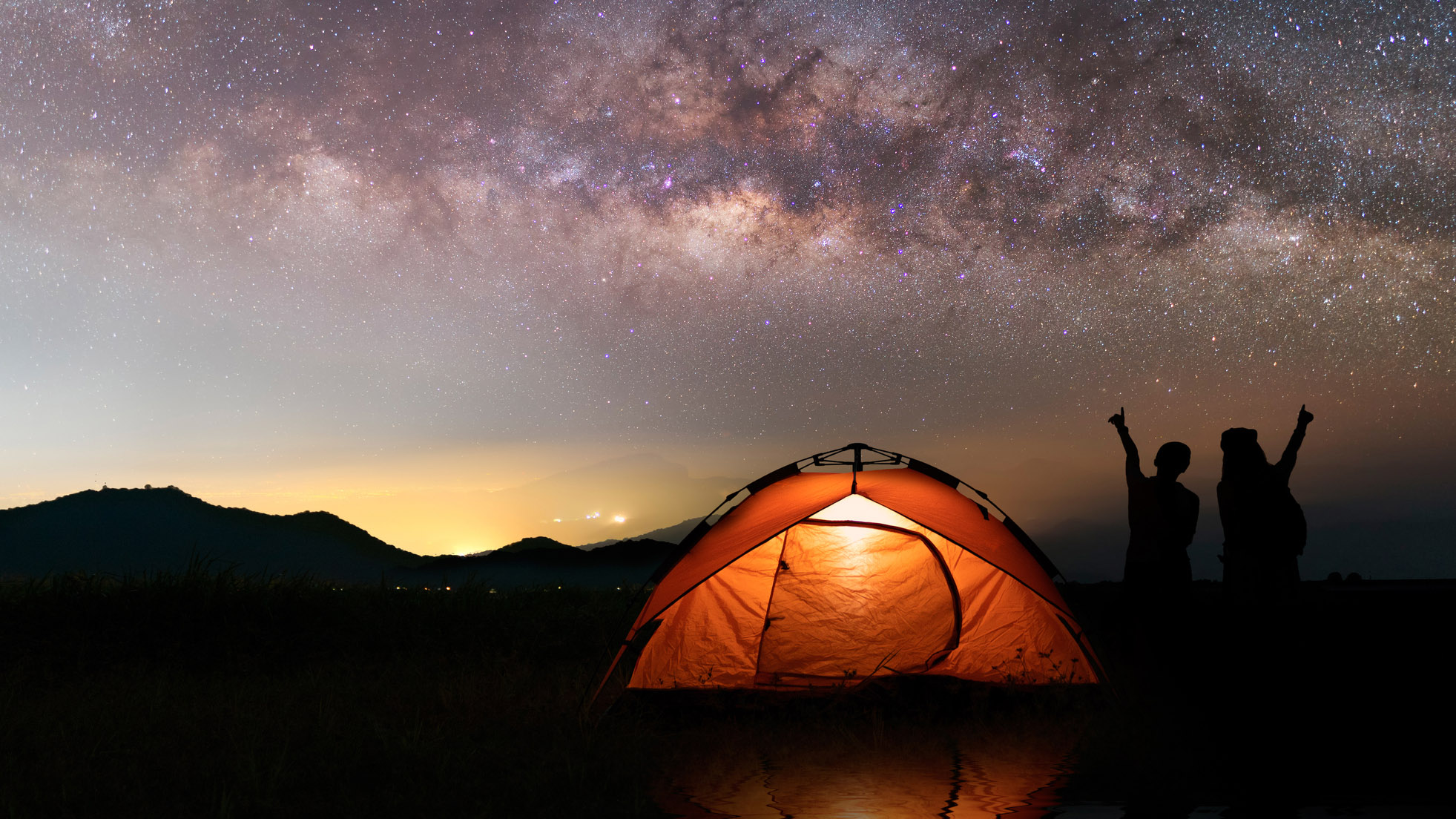
When camping, you are your main heat source. Items like clothes and sleeping bags insulate you, but it's your body heat that they need to do this. Even the best camping tents are only made of fabric, so there's only so much they can do to keep you warm. It's how you utilize clothes, bags, tents and other camping gear that will lead to a comfortable night's sleep.
Of course, the quality and specifications of your kit also matters. The best sleeping bags for summer use won't necessarily keep you warm in early spring, so it's important to choose your weapons wisely for a warm, wild weekend. Without further ado, here are our 19 tips and tricks on how to stay warm in a tent this camping season.
How to stay warm in a tent: tips and tricks for a cozy night at camp
1. Buy the right kit
Very few campers have ever spoken the words “gee, I wish I’d skimped a little on my sleeping bag/tent/mid layers and got something that wasn’t quite so darned toasty!”
The take-home from this observation is, of course, that spending a few extra bucks at the point of purchase could save you a great deal of pains and problems further down the line. And while nobody consciously attempts to buy kit that falls short of the mark in the coziness stakes, there is a tendency to lowball our estimates of anticipated temperatures in an effort to lessen the blow to our bank accounts.
But just what, exactly, constitutes the “right” kind of kit?
All the latest inspiration, tips and guides to help you plan your next Advnture!
Well, this largely depends on where you are in the world and when you plan on doing your camping. That said, one solid rule of thumb that’s held us in good stead (and kept us plenty cozy) over the years, goes as follows: when assembling your camping kit, choose gear that will keep you warm in the coolest conditions you might encounter in the season in which you’re doing your camping.
For more on this, check out our detailed guides on how to choose a sleeping bag, types of sleeping bag, and how to choose a tent.
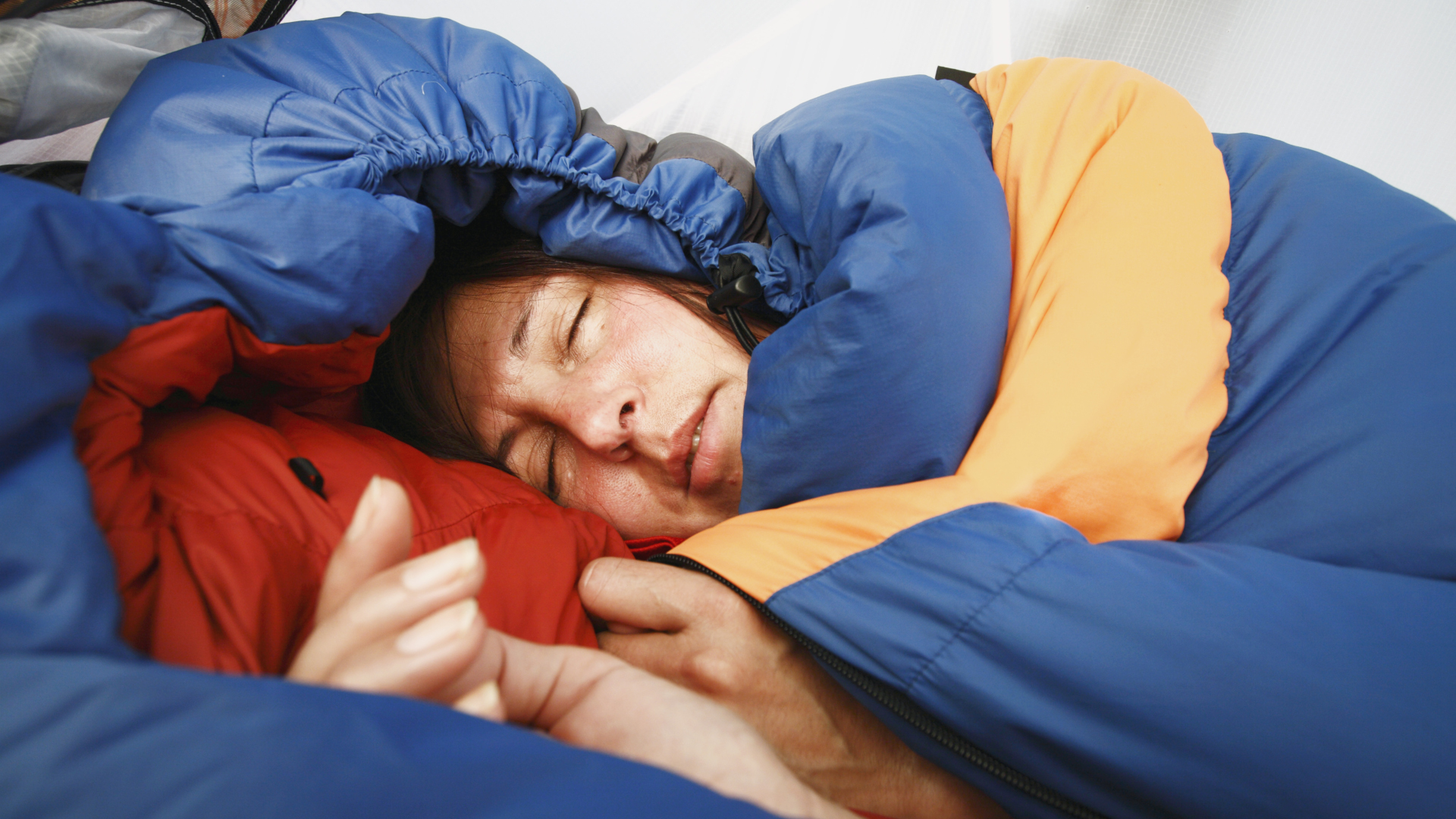
2. Choose your pitching location wisely
Many campers are apt to take a willy-nilly approach to where they pitch their tent, but doing so could easily expose your shelter to the unwanted attentions of everything in the weather's arsenal: rain, wind, and all the rest of it. If you think it can't snow in summer, you'd be wrong, especially in mountainous regions.
Making you pitch entirely weather-resistant, of course, is never really on the cards, but there are a few things you can do to bolster your defenses and avoid a cold night under the canvas.
- Use a weather app to plan your camp spot ahead of your hike and based on the forecasted wind direction
- Make use of features such as knolls, hollows, boulders, or trees, all of which can serve as natural windbreaks
- Avoid exposed low-lying areas (cool air settles lower in valleys at night) and select a spot around 100 feet above the valley floor
- Try to park your tent where it will catch the sunrise (your pre-caffeinated morning self will thank you for it)
- Avoid exposed ridges in case the wind gets up during the night
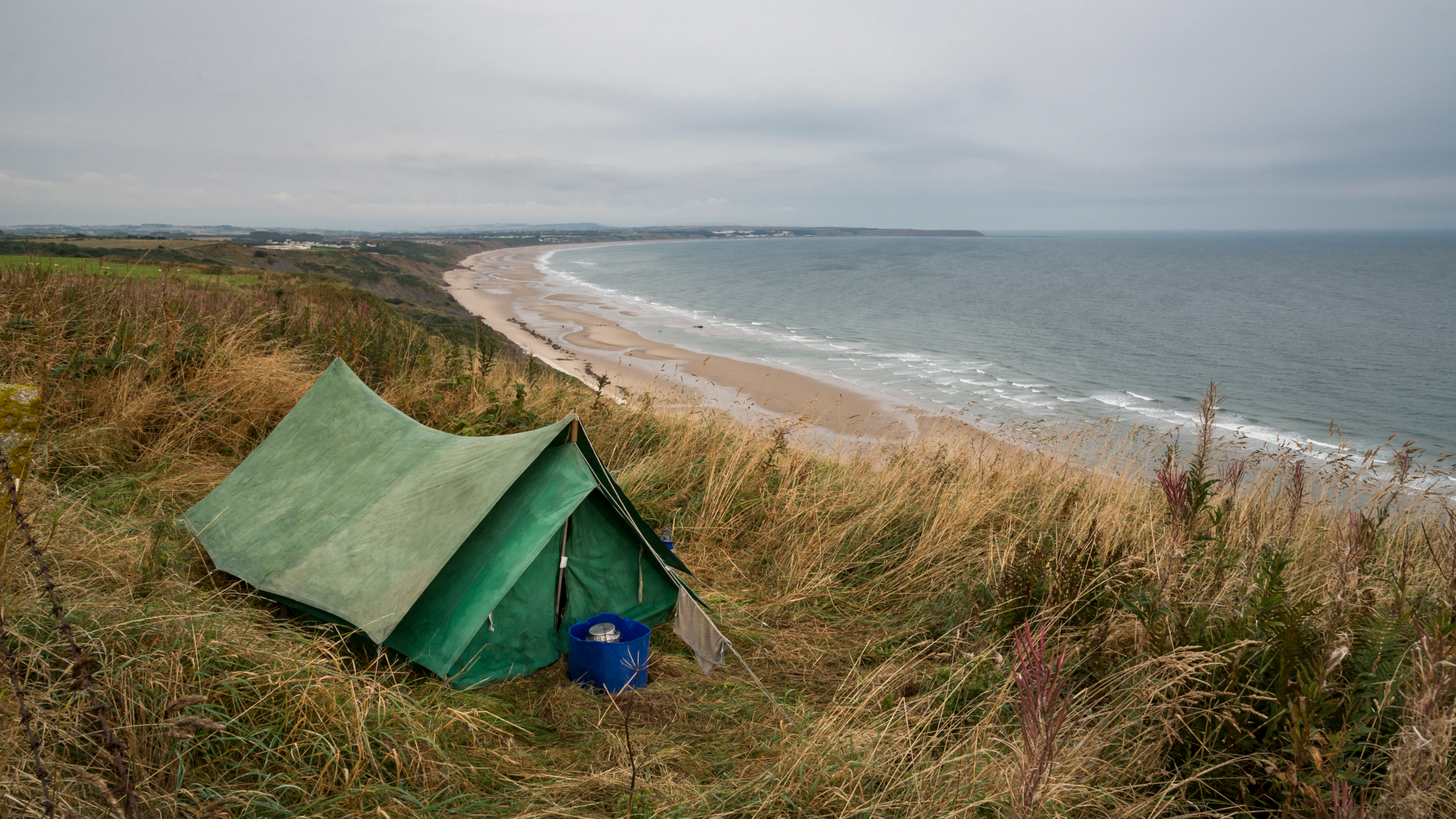
3. Double down on weather resistance
The emergency bivvy bag (aka “space blanket”) in most campers’ backpacks rarely sees the light of day or does anything to earn its keep amidst the rest of your kit.
To make yours more than a dead weight, poke a pair of holes in opposing corners with your trekking poles, stick these into the ground on the windward side of your tent and – ta-da! – you have a less-than-perfect but perfectly passable windbreak.
4. Layer up before you get cold
Staying warm is far more easily achieved than getting warm again after you’ve allowed your core temperature to drop. For this reason, be sure to throw on an extra layer or two, such as your best fleece jackets when the sun drops or after arriving at camp on the back of a hike.

5. Eat for heat
When we eat, our bodies generate heat in the process of digesting our food (technically known as “diet-induced thermogenesis,” for fans of fancy terminologies). Shifting your camping meal a little closer to bedtime, therefore, is a very easy way to ensure that you’re as warm as can be when it’s time to hit the hay.

6. Warm up before bed
Going to bed cold is one of the surest ways to ensure you stay that way for a large part if not all of the night. Before bedtime, then, it’s a good idea to get your blood flowing and your core temperature up by taking a brisk walk or doing a spot of exercise – a few minutes of star jumps, burpees, running on the spot, or push-ups should do the trick.
7. Have a hot drink
If all of the above sounds like a little too much effort, fear not – bicep curling a mug or two of your favorite warm drink could have just as warming an effect. This, of course, requires having either a camping stove to do the heating on or one of the best hiking flasks.
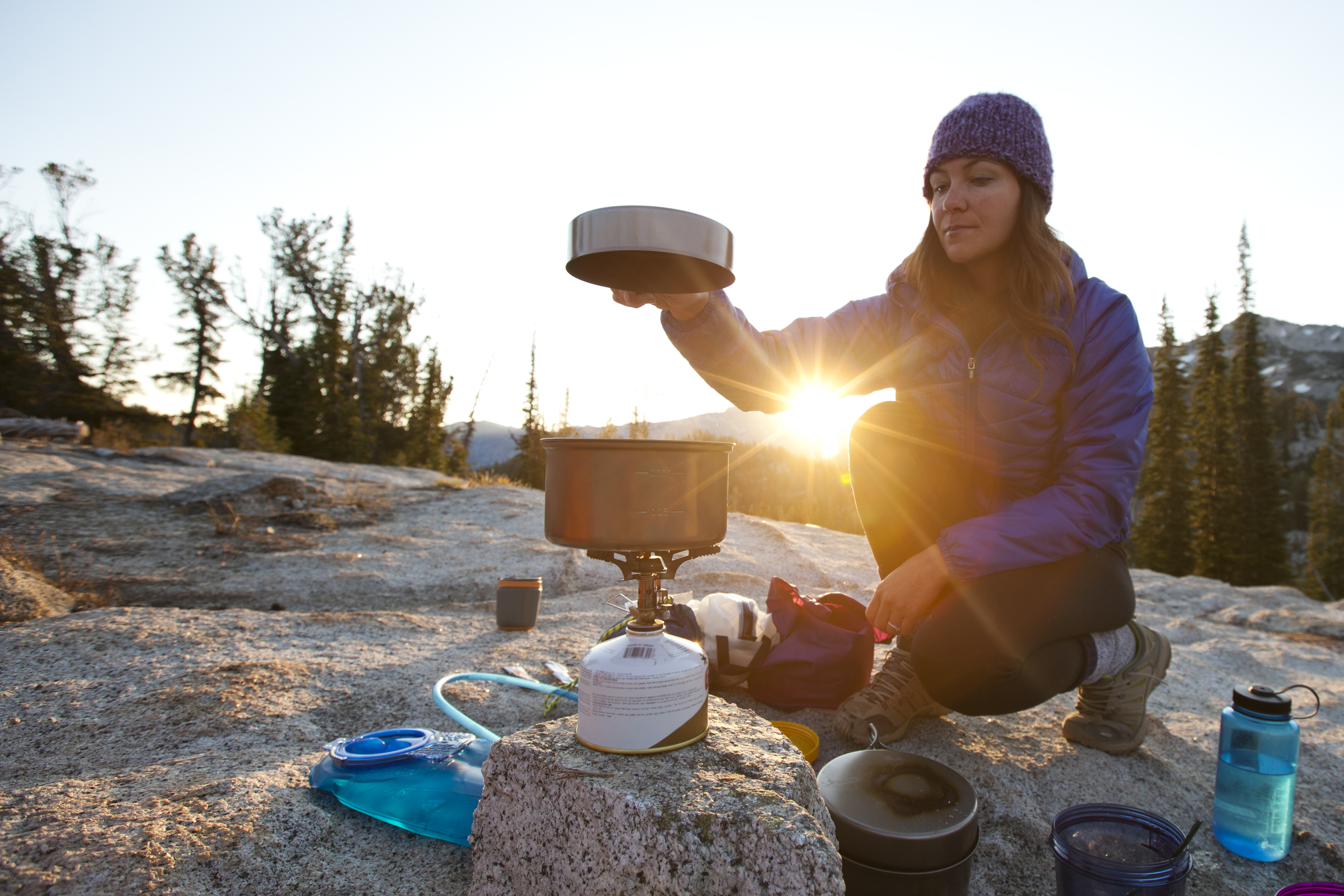
8. Wear thermal base layers
You’ll win no prizes for style or sexiness, but wearing one of the best base layers to bed is vital for a good night’s sleep in the shoulder seasons or during winter. Not only do they add warmth when in your sleeping bag, they also make getting out of it in the morning a lot more tolerable than when you’re sleeping au naturel or in your underwear alone.
9. Use a liner
The best sleeping bag liners can add up to 25F of heat to your sleeping bag. Even if you don’t use it, having one along on your trips will give you added peace of mind in knowing that, if temps do take a turn for the frigid, you’ll have a fleecy or silky savior to wield against them. For more on liners, check out what is a sleeping bag liner?
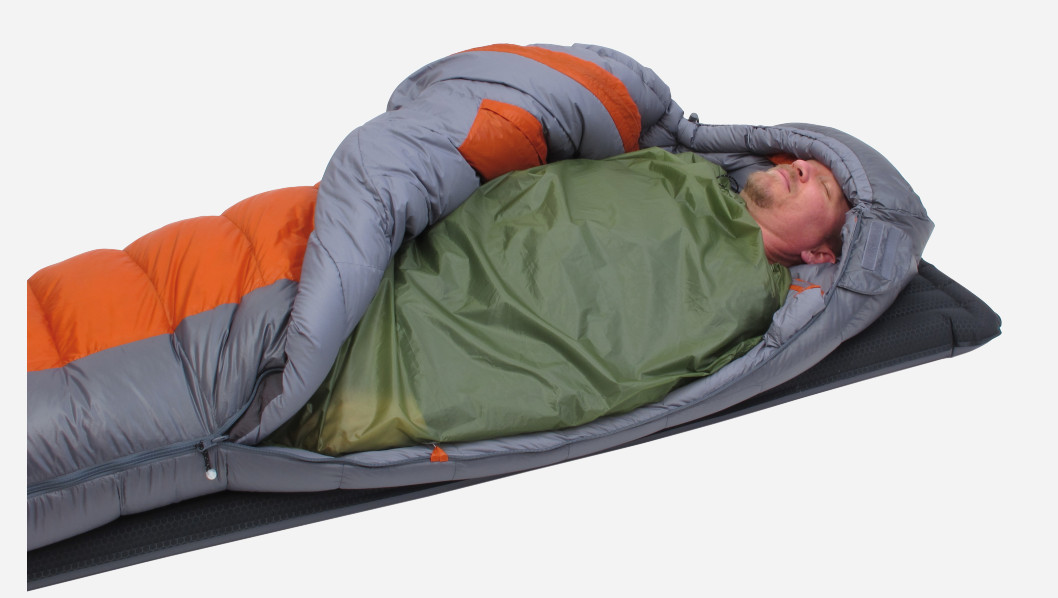
10. Keep your tent ventilated
When temps are low, the temptation is to “batten down the hatches” and close all of your tent’s vents in a bid to prevent the warm air inside it escaping. Doing this, however, could end up being counterproductive. Poorly ventilated tents, you see, are ones sure to become either slightly damp or altogether aquatic as a result of condensation, which builds up inside your tent as a result of the accumulation of water particles in your breath and sweat that can’t escape to evaporate outside.
Dampness isn’t a problem in and of itself, but even the best sleeping bags – particularly if made with down – will struggle to insulate when in the least bit wet.
11. Bring a pee bottle
Nobody wants to leave the warmth of their tent and sleeping bag in the middle of the night to answer nature’s calls. Bringing along an empty bottle could save you the hardship – just make sure that you can differentiate between your pee bottle and your water bottle when hydrating in the morning! In our experience, wide-mouth bottles with (very) secure screw-on lids are the best option.
12. Choose your fuel wisely
Those bedtime hot toddies or cocoas could be cold ones if your cooking paraphernalia isn’t fit to task. In addition to packing a camping stove, it’s also a good idea to consider the type of fuel you’ll be burning. Liquid fuel works well in sub-zero temps but weighs more than the alternatives and burns slower. Butane’s the lightest and most energy-efficient of the bunch but has been known to stop working in chilly temps. Propane, finally, burns quickly but is effective in temps as low as -40°F.
13. Insulate your underside
Our bodies lose heat in two ways inside a tent: convective heat loss (the transfer of body heat to the air) and conductive heat loss (the transfer of body heat to the ground). While our tent and sleeping bag take care of the former, minimizing the latter requires the best sleeping pad and, in especially cold temps, a few further insulating add-ons. The best of these are a separate groundsheet placed under your tent, a lightweight foam mat to boost your sleeping pad’s R-value (see: Sleeping pad R-values explained), and a camping rug (if car camping). If temps are truly chilly, you can also spread spare items of clothing across the floor of your tent to provide an added buffer while moving around inside.
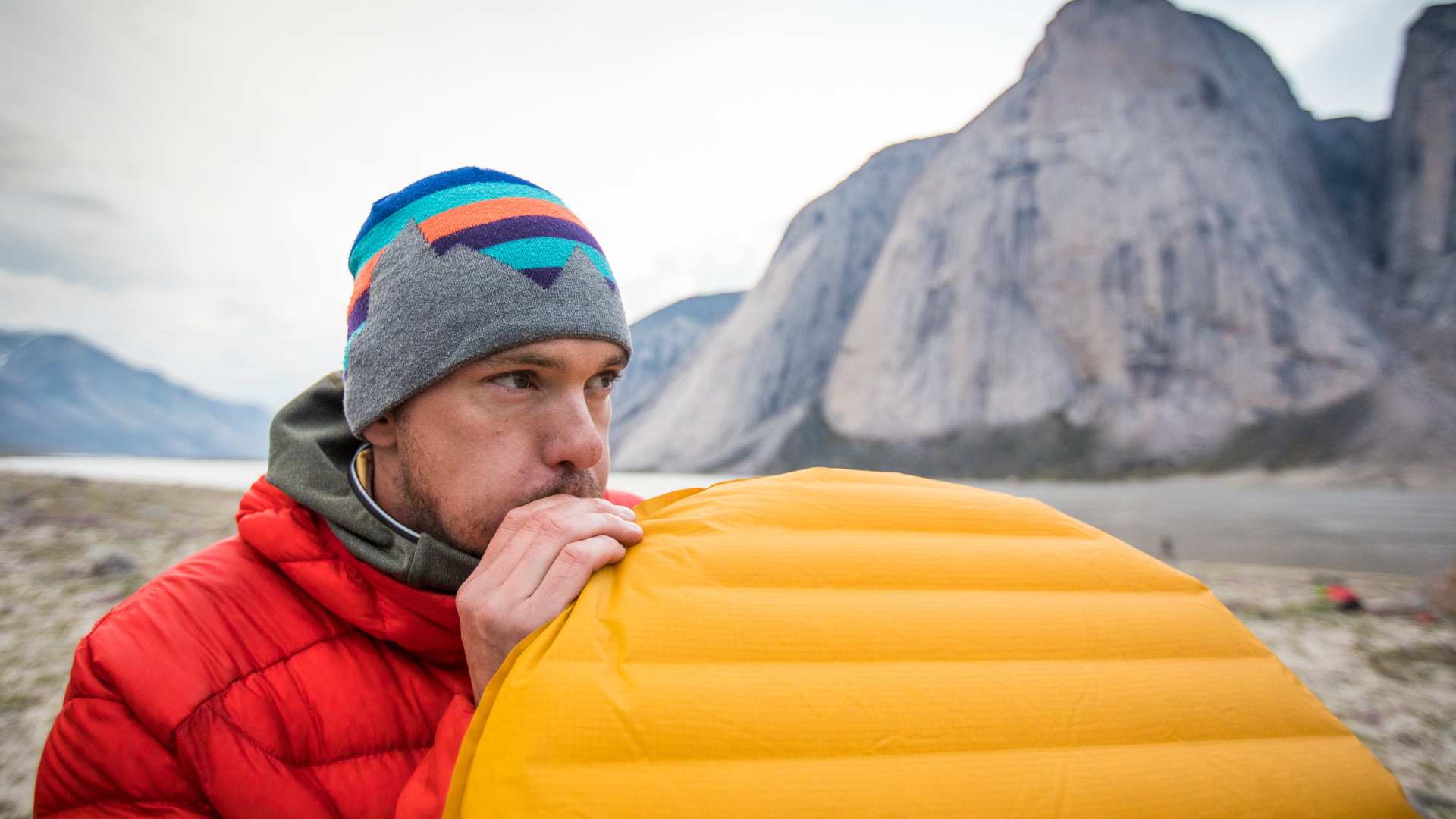
14. Pack a pair of tent slippers
Your tent mates will chuckle at first, sure, but you’ll have the last laugh when their midnight toilet break leaves their tootsies far from toasty. Likewise, the best hiking gloves can keep hands warm, or even better are a pair of Dachstein Mitts.
15. Choose a small tent
Humans are to tents what radiators are to homes – that is, the primary source of heating. Just as a pair of radiators will heat a smaller house far better than they will a bigger house, your body heat will warm up a smaller tent far more effectively than it will a family tent.
16. Store gear inside your tent
To further reduce the square footage your body heat has to warm up, and thus improve thermal efficiency, bring as much gear as is convenient inside with you at night.
17. But...
…leave sharp items like cooking utensils, crampons, and ice axes outside or in the vestibule – just a small rip in the wall of your tent could create a little more ventilation than is ideal.
18. Bring a hot water bottle
This small, relatively lightweight addition to your kit could be worth its weight in gold on nippy nights.

19. Or...
…consider carrying a few disposable heat packs. These might not offer the same warmth as a hot water bottle, but they can make a real difference if your extremities are apt to get cold.
How to stay warm in a tent: what not to do
Don’t cook inside your tent
…or use your stove as a heat source – doing so could result in carbon monoxide poisoning.
Don’t leave electric heaters on while you sleep
If you’re camping at a hook up, a portable electric heater offers one of the easiest ways to stay warm – and one of the easiest ways to inadvertently turn your tent into a blazing bonfire. If using a heater, be sure to turn it off before falling asleep and never leave it unattended.
Former Advnture editor Kieran is a climber, mountaineer, and author who divides his time between the Italian Alps, the US, and his native Scotland.
He has climbed a handful of 6000ers in the Himalayas, 4000ers in the Alps, 14ers in the US, and loves nothing more than a good long-distance wander in the wilderness. He climbs when he should be writing, writes when he should be sleeping, has fun always.
Kieran is the author of 'Climbing the Walls', an exploration of the mental health benefits of climbing, mountaineering, and the great outdoors.

